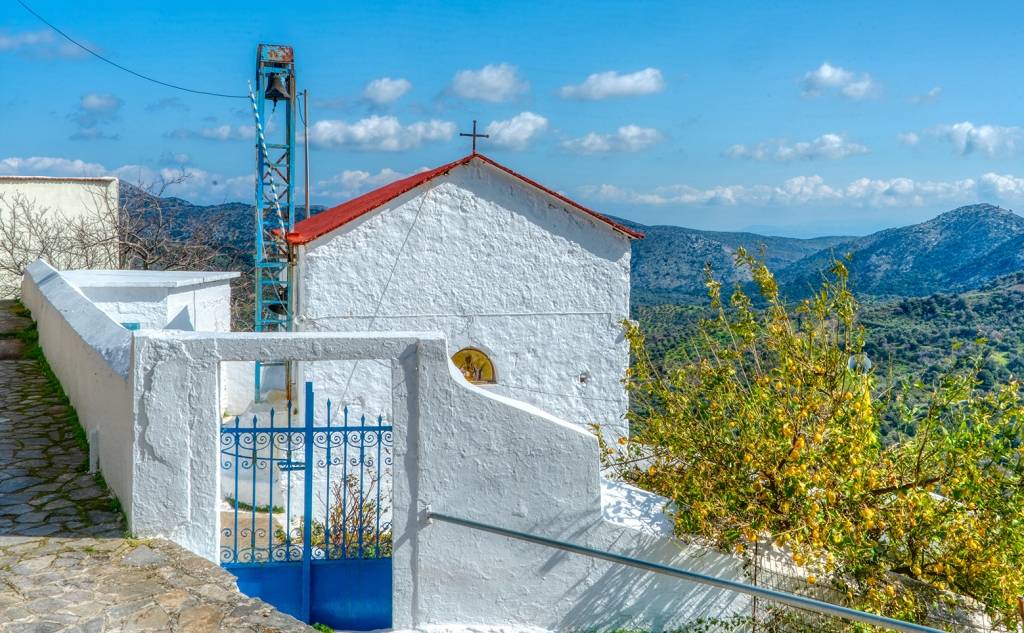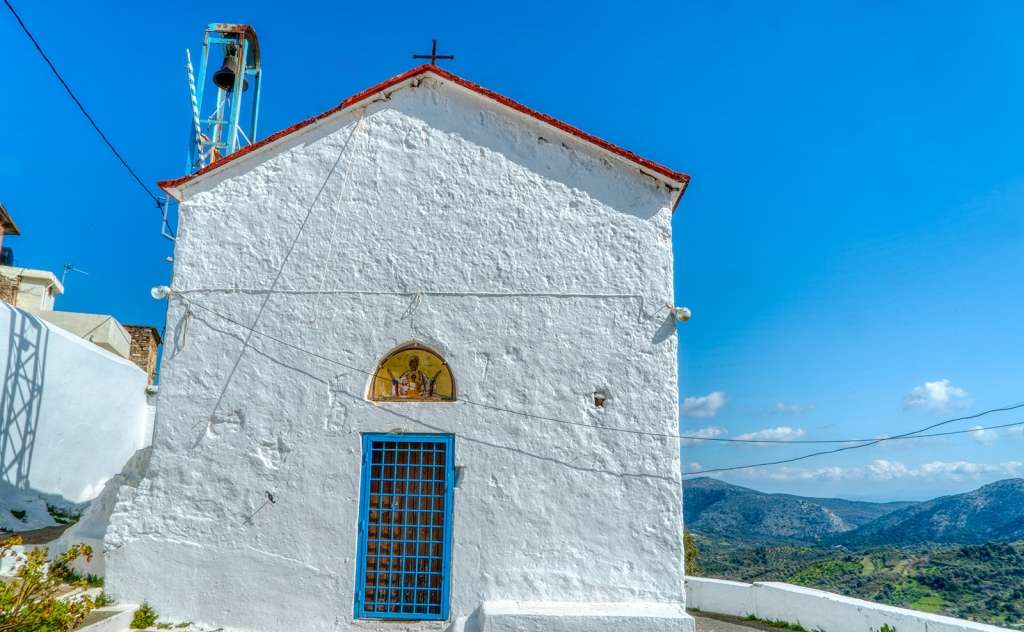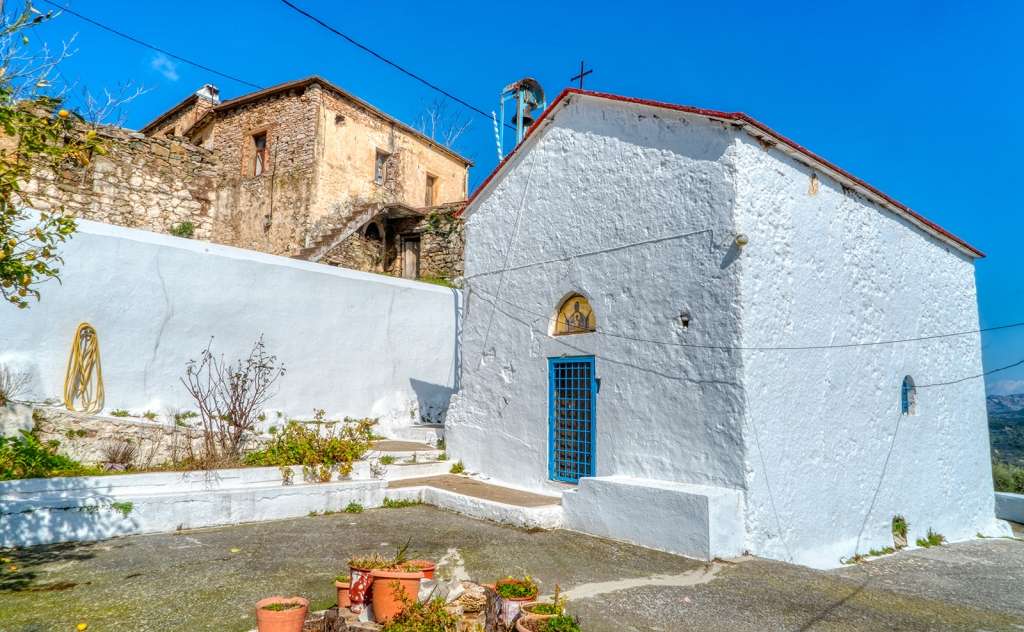Church of Panagia
The Byzantine church of Panagia (Assumption of the Virgin) is located in the mountainous settlement of Gonies, which is 22 km from Herakleion.
The temple was built in the 13th century and is a real jewel. Although it was burned by the Turks twice, it stands out for its magnificent frescoes and wood-carved iconostasis.
The temple operated as a cemetery. In fact, in works carried out outside, tombs with bones were found, which were transported inside the temple. What makes it stand out is the "eonology" that adorns the right side of its window, counting time from zero up to the 9th century. The locals report that the church of Panagia was part of a monastery that operated on the spot, which at some point was destroyed.
The wood-carved iconostasis was made by craftsmen that came to Crete from other places around Greece. Characteristic figures at both ends of the iconostasis symbolise good and evil, hell and heaven. One form appears upright, while the other is upside down. To the right of the iconostasis, the presence of a large icon of Agios Charalambos testifies to the passage of a plague through the village of Gonies.
The blue indigo found in some of the temple's hagiographies comes from Afghanistan - the only country that produced this colour. The artists of Constantinople were supplied with this colour, and its value was greater than that of gold. The cavalry Saints on the left and female figures on the right are painted inside the church. At another spot, the visitors can see Jonah on the whale and just opposite the Sanctuary, they can see the representations of hell and the Second Coming. Also, in the hagiography of the Sanctuary, there is something rare. We have, of course, Agios Stefanos on the left and the collaborating hierarchs, but here, the hierarchs are depicted in two rows (one on top of the other). This is because the temple is tall and so there was room for more. Finally, it is noteworthy that while the church is dedicated to the Virgin Mary, all the frescoes are dominated by representations of the life of Christ.





